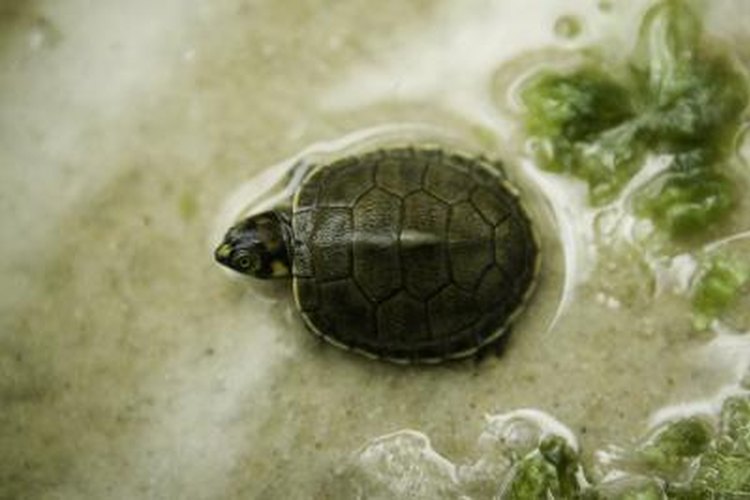To keep a turtle tank from smelling, regularly clean the tank and filter to remove waste buildup. Monitor water quality.
Having a pet turtle can be a rewarding experience, but maintaining a clean and odor-free tank is essential for the health and well-being of your pet. A smelly turtle tank can be a sign of poor hygiene and can also be unpleasant for you and your turtle.
By following some simple steps and being proactive in tank maintenance, you can ensure a clean and fresh-smelling environment for your beloved pet. We will discuss effective strategies and tips to keep your turtle tank smelling fresh and clean.
Proper Tank Cleaning
Proper Tank Cleaning is essential to maintain a healthy and odor-free environment for your turtle. Regular cleaning and maintenance of the tank and its accessories can significantly reduce the risk of foul odors. Here are some effective cleaning practices to keep your turtle tank smelling fresh.
Regular Water Changes
Regular water changes are crucial for maintaining a clean and odor-free turtle tank. Perform partial water changes every 1-2 weeks to remove accumulated waste and excess nutrients from the water. This helps in preventing the build-up of harmful bacteria and reduces the likelihood of foul odors. Ensure to use a dechlorinator when adding fresh water to neutralize harmful chemicals.
Cleaning The Tank Accessories
Regularly clean the tank accessories such as rocks, decorations, and filters to prevent the accumulation of waste and algae. Remove any uneaten food and waste from the tank to prevent the decomposition process that leads to foul odors. Thoroughly scrub and rinse the accessories with warm water to remove any residue. Replace or clean the filter media as per the manufacturer’s recommendations to maintain efficient filtration and reduce odor-causing particles.

Credit: www.reddit.com
Filter Maintenance
Proper maintenance of the filter is essential to ensure a clean and odor-free environment for your turtle. Filter maintenance involves selecting the right filter for your turtle tank, as well as cleaning and replacing the filter media regularly.
Choosing The Right Filter For Your Turtle Tank
When selecting a filter for your turtle tank, it’s crucial to consider the size of the tank and the number of turtles you have. Choose a filter that is specifically designed for turtle tanks and can handle the tank’s water capacity. Look for filters that offer mechanical, biological, and chemical filtration to effectively remove waste and impurities from the water.
Cleaning And Replacing Filter Media
Regular cleaning and replacement of filter media are vital to maintain the filter’s effectiveness. Clean the filter media according to the manufacturer’s instructions, usually by rinsing it in dechlorinated water to remove debris and buildup. Additionally, replace the filter media as recommended by the manufacturer to ensure optimal filtration performance.
Feeding Practices
To prevent a smelly turtle tank, ensure to clean the tank regularly and remove any uneaten food. Utilize a good filtration system and consider feeding your turtle in a separate container to minimize waste in the tank. Additionally, provide a balanced diet and avoid overfeeding to maintain a clean and odor-free environment for your pet.
Avoid Overfeeding Your Turtle
Overfeeding is a common mistake that pet owners make, which leads to a smelly tank. Turtles have a slow metabolism, and they do not require food every day. Overfeeding can lead to leftover food that rots and produces an unpleasant odor. It is essential to feed your turtle in the right amount and frequency. Young turtles require more food than adults. As a general rule, feed your turtle once every two days, and only provide an amount that it can finish in 15 minutes.Remove Uneaten Food Promptly
After feeding your turtle, remove any uneaten food promptly. Leftover food will decompose and contribute to the growth of harmful bacteria in the tank, leading to an unpleasant smell. You can use a net to scoop out any food that your turtle has left behind. If you notice that your turtle has not eaten anything within 30 minutes, remove the food and reduce the amount of food you offer during the next feeding.Consider Feeding Your Turtle Outside Of The Tank
Feeding your turtle outside of the tank can help reduce the smell in the tank. By doing this, your turtle will not be able to leave food particles in the water, which can contribute to the growth of bacteria. You can place your turtle in a separate container while feeding or designate a feeding area outside of the tank.Provide A Balanced Diet
A balanced diet is essential for the health of your turtle and can help reduce the smell in the tank. Offer your turtle a variety of food, such as pellets, vegetables, and protein. Avoid feeding your turtle only one type of food as this can lead to nutrient deficiencies. Consult with your veterinarian or a reptile expert for advice on the best diet for your turtle.Clean The Tank Regularly
Cleaning the tank regularly is the most effective way to prevent a smelly tank. Remove any uneaten food, feces, and debris from the tank daily. Change the water in the tank once a week or more frequently if necessary. Use a good quality filter to keep the water clean and clear. By maintaining a clean tank, you can ensure the health and well-being of your turtle while also preventing any unpleasant odors.Aquatic Plants And Decor
Aquatic plants and decor play a crucial role in maintaining a clean and odor-free environment in your turtle tank. Not only do they add aesthetic appeal, but they also provide numerous benefits that contribute to the overall well-being of your pet turtles.
Benefits Of Aquatic Plants In Reducing Odor
Aquatic plants act as natural filters, absorbing nitrates and other waste products that contribute to foul odors in the tank. These plants also release oxygen, which helps to aerate the water and promote a healthier aquatic ecosystem.
Cleaning And Maintaining Tank Decorations
Regular cleaning and maintenance of tank decorations are essential to prevent the buildup of waste and bacteria that can lead to unpleasant odors. It’s important to remove any uneaten food, debris, or algae from the decor to keep the tank clean and odor-free.
Proper Ventilation
Proper ventilation is crucial in maintaining a fresh and odor-free environment for your turtle tank. Without adequate airflow, unpleasant smells can quickly build up, creating an unhealthy habitat for your pet. Here are some essential tips to ensure proper ventilation for your turtle tank:
Installing Aeration Equipment
Aeration equipment such as air pumps and air stones can significantly improve the air circulation within the tank. These devices work by agitating the water’s surface, promoting gas exchange and preventing the accumulation of stagnant air. This helps to reduce the buildup of unpleasant odors and ensures that your turtle has access to fresh, oxygenated water.
Positioning The Tank In A Well-ventilated Area
Positioning your turtle tank in a well-ventilated area is essential for maintaining good air quality. Placing the tank near a window or in a room with adequate airflow can help to disperse any odors that may develop. Additionally, ensuring that the tank is not placed in a closed-off or poorly ventilated space can promote better air circulation and prevent the accumulation of stale air.

Credit: m.youtube.com
Monitoring Water Quality
Ensure proper water quality in your turtle tank to prevent unpleasant odors. Regularly monitor pH levels, ammonia, nitrites, and nitrates. Implement a filtration system and perform water changes to maintain a clean and odor-free environment for your turtles.
Regular Water Testing
Turtles are known for their messy nature, and their tanks can quickly become a breeding ground for bacteria and algae. Regular water testing is essential to ensure that the water quality is safe for your pet turtle. Test the water at least once a week to monitor the pH, ammonia, nitrate, and nitrite levels in the tank. These levels should be within safe limits to ensure your turtle’s health.Adjusting Ph And Ammonia Levels
The pH level in your turtle’s tank should be between 6.8 and 7.4. Anything below or above these levels can cause health problems for your turtle. Similarly, the ammonia level should be zero. If the levels of pH and ammonia are not within safe limits, it is essential to adjust them. You can adjust the pH level by adding baking soda or vinegar to the water. For ammonia levels, use a biological filter or change the water frequently.Ensuring Water Circulation
Water circulation is crucial to maintain the quality of your turtle’s tank. Stagnant water can lead to the growth of harmful bacteria and algae, which can cause a foul smell. Ensure that the tank has a suitable filter that can circulate the water and remove any debris or uneaten food. You can also add an air pump to increase the oxygen level in the water.Keeping The Tank Clean
Cleaning the turtle tank regularly can go a long way in preventing any foul smell. Remove any uneaten food, feces, or debris from the tank daily using a net. Use a gravel vacuum to clean the substrate at least once a month. Scrub the tank walls and decorations with a soft brush and hot water. Never use soap or detergent as it can be toxic to your turtle.
Credit: animals.mom.com
Conclusion
To maintain a fresh-smelling turtle tank, regular cleaning and proper filtration are key. Implementing a consistent routine will ensure a healthy environment for your pet. By following the tips discussed, you can enjoy a clean and odor-free turtle tank. Keep your aquatic friends happy and thriving!






Leave a Reply